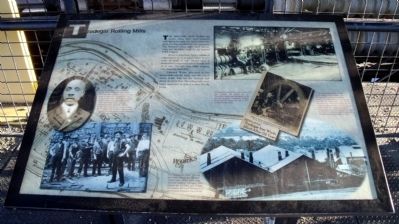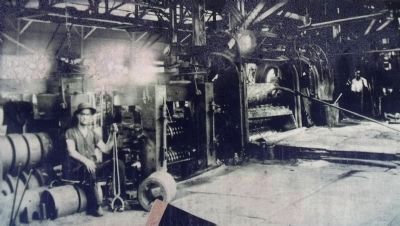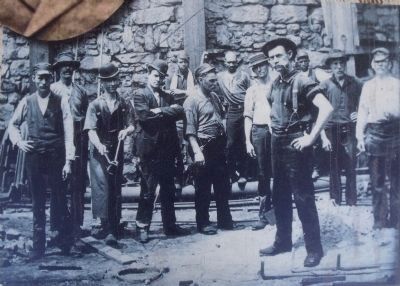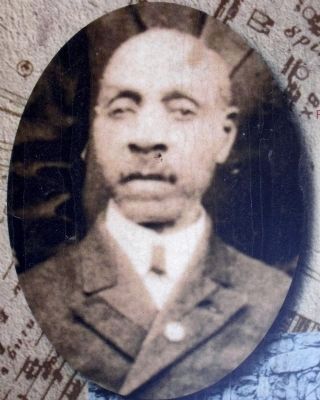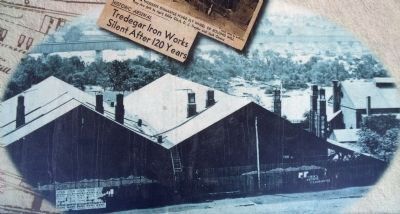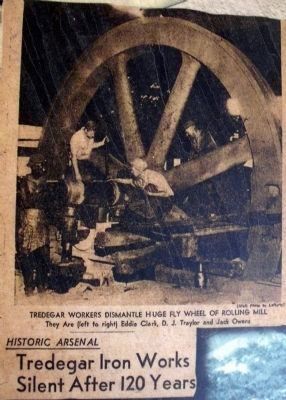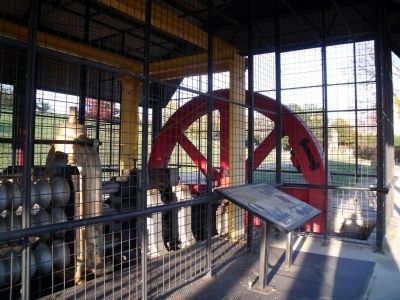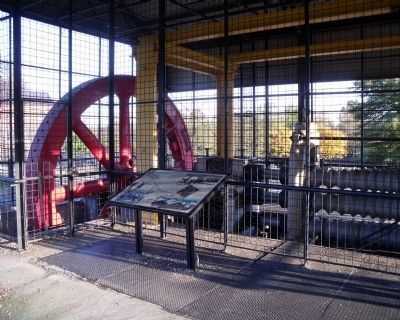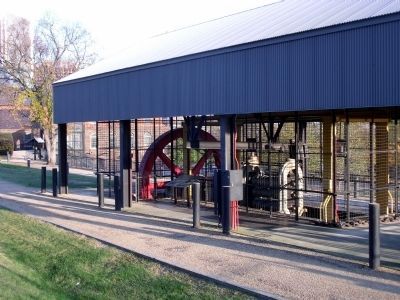Gambles Hill in Richmond, Virginia — The American South (Mid-Atlantic)
Tredegar Rolling Mills
. Power is transferred from a turbine or waterwheel to a set of gears, which drive a series of stands of rolls. Heated metal is elongated and shaped as it passes through each set of rolls. The rolls here, called roughing rolls, shape the metal first.
Edward Wade, pictured in the foreground with his tongs, was the son of James Wade, who ran the Tredegar mill during the Civil War. The rolling mills were highly dependent on skilled workers like the Wades.
Topics. This historical marker is listed in these topic lists: Industry & Commerce • War, US Civil.
Location. 37° 32.121′ N, 77° 26.813′ W. Marker is in Richmond, Virginia. It is in Gambles Hill. Marker can be reached from Tredegar Street, 0.1 miles west of South 5th Street. This marker is located outside the Civil War Visitor Center at Tredegar Iron Works. Touch for map. Marker is at or near this postal address: 470 Tredegar Street, Richmond VA 23219, United States of America. Touch for directions.
Other nearby markers. At least 8 other markers are within walking distance of this marker. Making Machines at Tredegar (a few steps from this marker); Belle Isle Prison (within shouting distance of this marker); Industrial Recycling (within shouting distance of this marker); Belle Isle and Old Dominion Iron and Nail Works (within shouting distance of this marker); Tredegar in 1951 (within shouting distance of this marker); Neighborhoods at Tredegar (within shouting distance of this marker); Horseshoe Shops (within shouting distance of this marker); The Bulldozer Press (within shouting distance of this marker). Touch for a list and map of all markers in Richmond.
More about this marker. On the left are two photographs of Tredegar mill workers. The caption reads, "Rolling mill workers in the nineteenth century were considered highly skilled. Often they were paid as a group, and the team, or supervisor, decided how much to pay each worker. Even during slavery, black workers were part of the skilled teams that rolled iron at Tredegar, prompting a strike by white workers in 1847, who objected to training slaves. Morton Deane was a skilled worker on the rolling mill who also served on the Richmond city council in the late 19th century."
On the lower right
is a photograph of the rolling mills with the caption, "The photograph (right), from the 1800s, shows the Tredegar rolling mills, which were large shed-like buildings with open sides. Despite the the millís lack of walls, the workers still found the heat from the furnaces intense in the summer."
On the center right is a photo of a flywheel from a newspaper clipping with the caption, "The flywheel helped to power a rolling mill that shaped hot pieces of iron. The wheel weighs approximately 64,000 pounds. Its great momentum, caused by its weight, helped the mill to run smoothly under the load.
The first flywheel was cast in 1846 by the Armory Iron Company, one of Tredegarís various incorporated bodies, and powered the mill through the Civil War. On August 25th, 1905, the first flywheel came loose from its bearings and exploded, killing one man and wounding two others. When the replacement wheel showed signs of cracks and stress in 1950, the wheel you see here took its place until Tredegar ceased operations in 1957."
Credits. This page was last revised on February 1, 2023. It was originally submitted on November 11, 2009, by Bernard Fisher of Richmond, Virginia. This page has been viewed 1,394 times since then and 39 times this year. Photos: 1, 2, 3, 4, 5, 6, 7, 8, 9. submitted on November 11, 2009, by Bernard Fisher of Richmond, Virginia.
